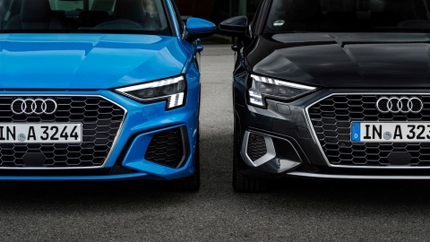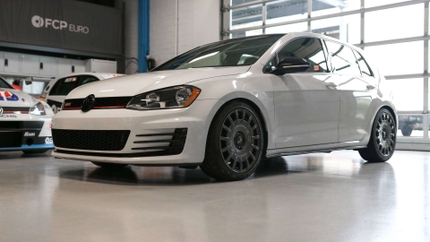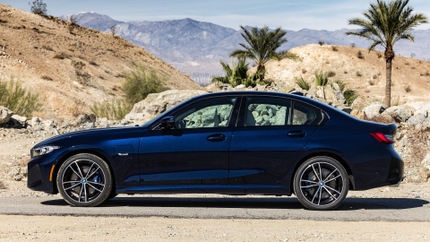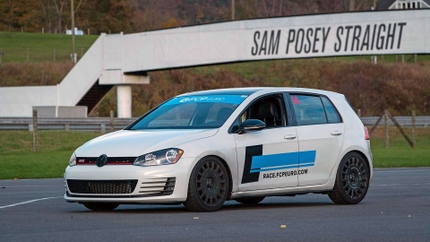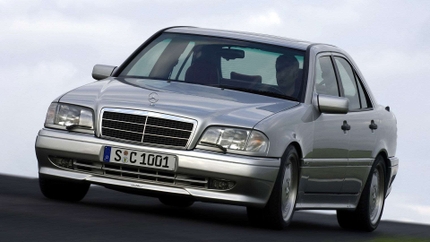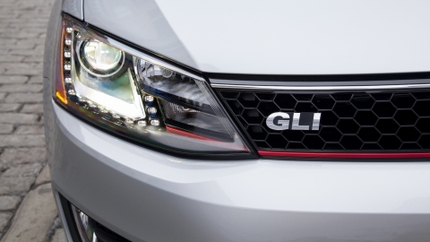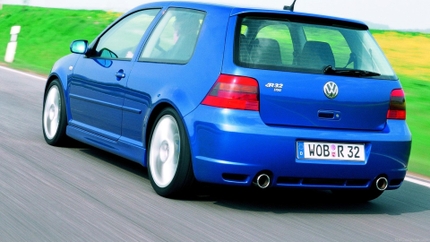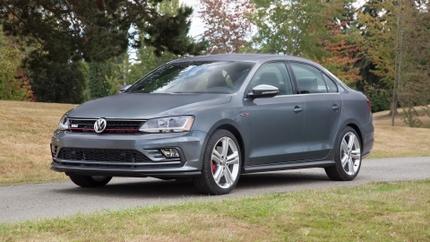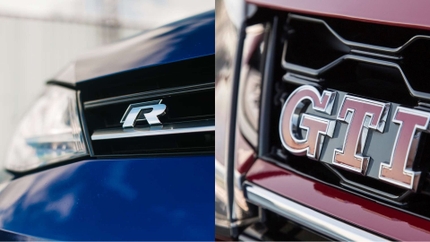- 05/24/2023
- 19 Min Read
- By: Christian Schaefer
VW Golf R Buyer's Guide - The Definitive Guide To The Mk7 Golf R
The VW Golf R is the pinnacle of the Golf range. Like the GTI, the Volkswagen Golf R is all about performance blended with useability, offering a friendly hatchback chassis with turbocharged performance and good fuel mileage, but it goes beyond the GTI in its offerings. The exterior is more aggressive, the interior uses higher quality materials, the performance is enhanced, and the engine drives all four wheels rather than just the fronts. It may share its underpinnings with the GTI, but it’s a different animal.
Now that the Mk7 is no longer the current generation, it makes for an attractive buy from the used lot. The MQB platform that underpins the Mk7 generation has been an absolute revelation for Volkswagen, and all models that use it are the better for it. The Golf R is no exception and has benefitted from an enormous amount of development of its AWD system and drivetrain components to become a tuner’s delight and a capable track day performer. Of course, the beauty of a high-performance Golf is that it retains practicality, allowing you to get to and from the grocery store as quickly as anything else on the road.
VW Mk7 Golf R Buyer's Guide Table of Contents |
Volkswagen Mk7 Golf R Overview
The Mk7 Golf R traces its origins back to the 1989 Golf Rallye, an AWD, supercharged, wide-body Golf built to homologate the Volkswagen for Group A rally competition. While the car didn’t succeed in competition, it laid the groundwork for what would become the Golf R’s recipe. It wasn’t until 2004 that we got a Golf with all four wheels receiving engine torque, but since then, every generation has had its Rallye-inspired example.
Mk7
The Mk7 was a massive leap forward for the Golf R, thanks to an all-new platform and a drivetrain full of tried and true bits. The previous PQ35 architecture was a revelation in 2006 upon debut but was behind the curve in 2012 when the Mk6 Golf R reached customers. Volkswagen’s MQB replaced the PQ35 and allowed VW to consolidate most parts between their various brands. From the Audi A3 to the Seat Leon, Skoda Octavia, and the Golf, each make and model benefits from the shared development of the MQB underpinnings.
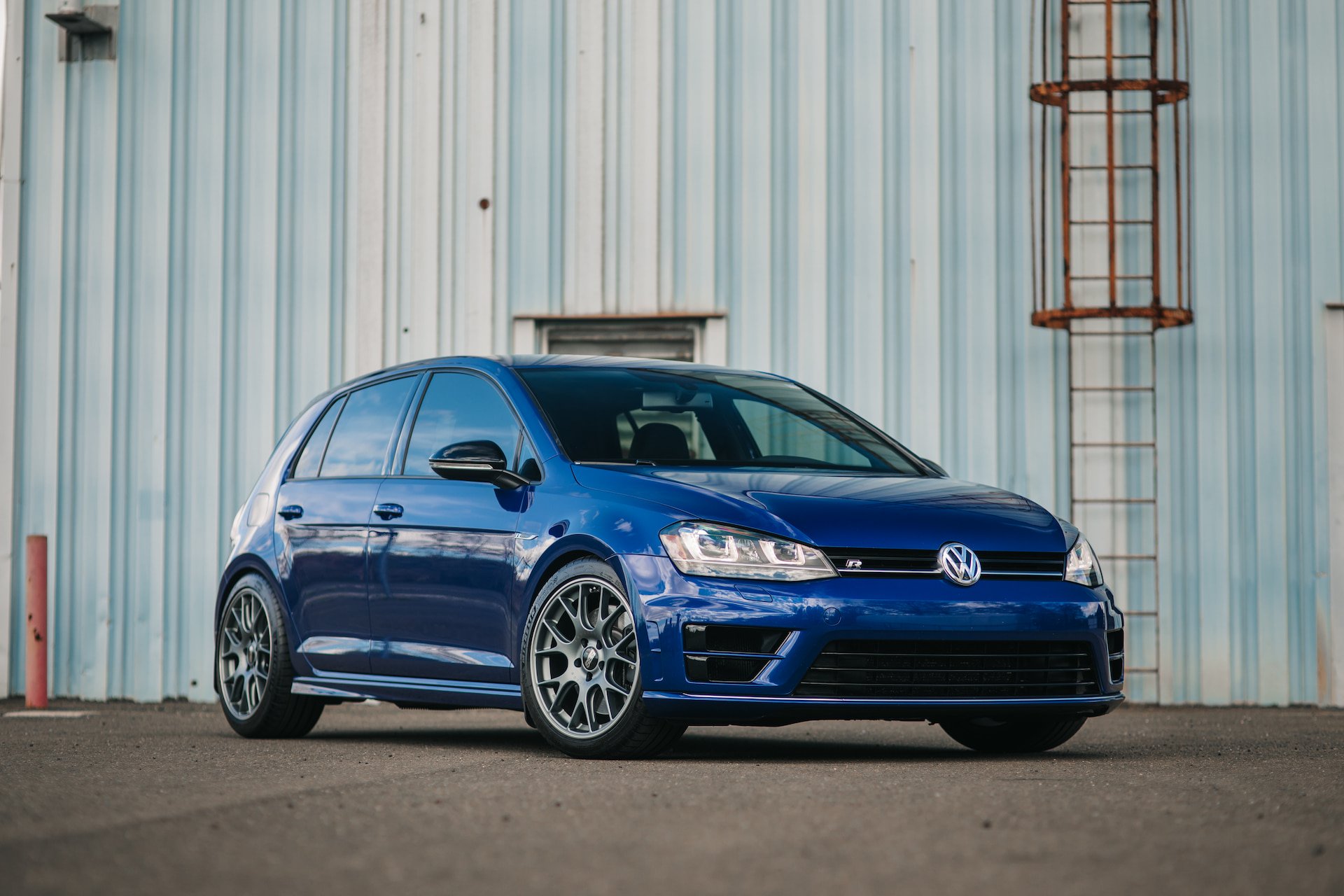
While consolidation doesn’t always mean a better product, it did in this case. Shrinking development and manufacturing costs freed up the capital to use better materials in chassis construction, interior appointments, and the drivetrain. Overall, the Mk7 was up to 100kg (220 lbs) lighter than its predecessor while improving its crash safety and structural rigidity. Golf R owners were privy to that development in a cabin wrapped in leather and soft-touch materials that looked like they belonged in an Audi. On top of that, the engine was as powerful as ever, and it carried a drivetrain to match.
Driving all four wheels is an evolution of the EA888 2.0-liter turbo four-cylinder engine that VW/Audi fit into the Mk6 GTI and GLI, Audi A3s, A4s, and a handful of other products. Specifically, the Mk7 Golf R uses the third generation, which features several updates that make it more powerful and fuel-efficient than ever. Peak power numbers for the American-spec car come in at 292 hp and 280 lb-ft of torque. That’s an 82-horsepower jump over the Mk7 GTI. Distributing all that power to the wheels is either a six-speed manual transmission or a six-speed DSG dual-clutch.
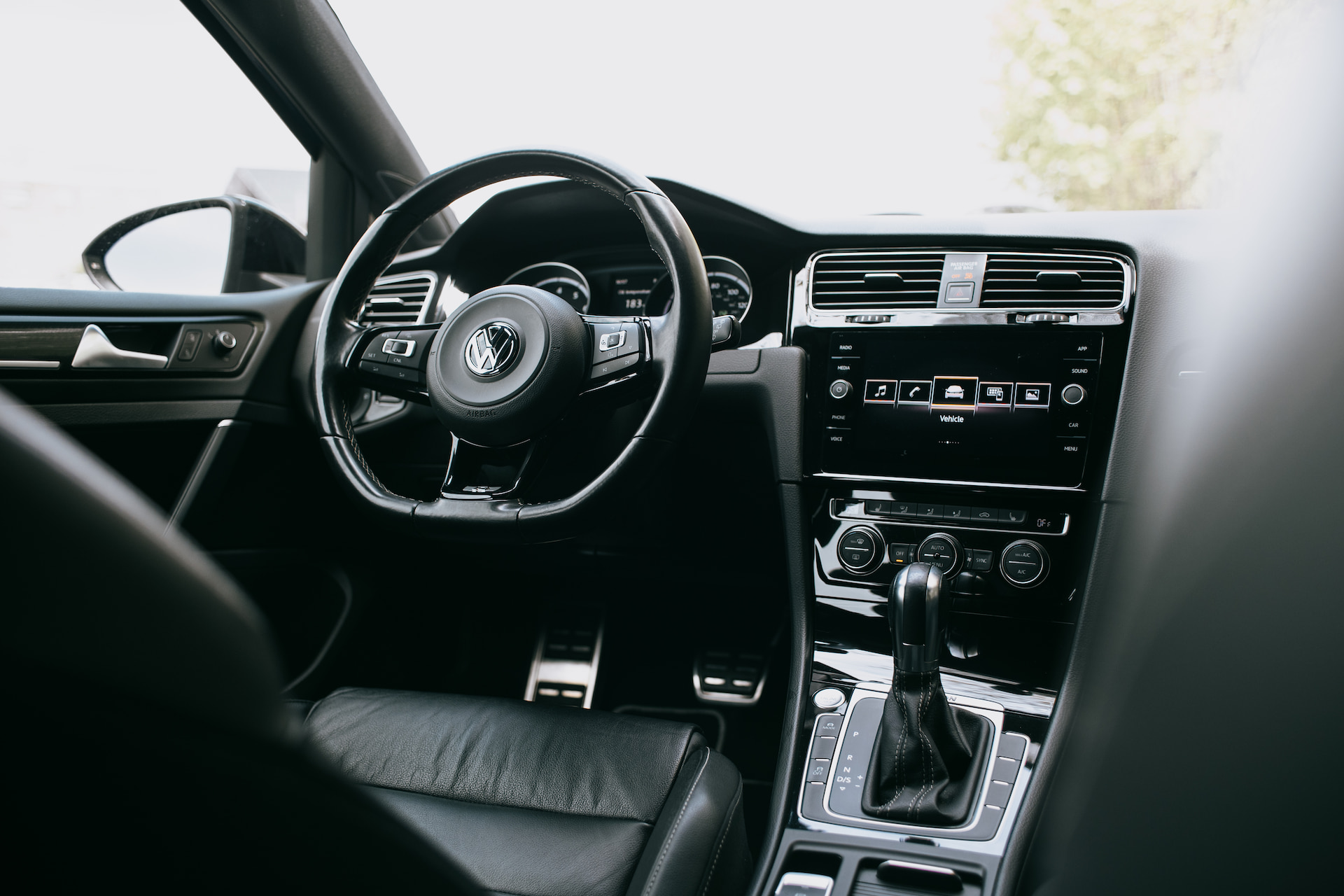
No matter the transmission, the fifth generation of Haldex’s all-wheel-drive system is equipped for every example. AWD has been the defining characteristic of the R, setting it apart from every other performance Golf offered in the US market. 0-60 times were under five seconds, and the rear differential and the torque-vectoring XDS+ system significantly aided handling performance. Past Golf Rs were criticized for their understeer, but those comments were nearly non-existent with the Mk7. Of course, that’s also in part to the MQB underpinnings. The rigidity and reduced weight offered by the MQB platform did wonders for the Golf and its performance variants. MacPherson struts up front and multi-link architecture out back ensures the Mk7 has the damping and camber control it needed to excel on the race track as much as it did on curvy mountain roads; we know that for a fact.
A pair of front seats with aggressively supportive bolstering help you stay planted while carving through those mountain roads. They’re nearly the same pieces from the GTI but wrapped in leather, have 12-way adjustment, and feature an “R” logo embroidered in silver. An R-exclusive leather-wrapped steering wheel with radio and Bluetooth controls is equipped in every example. It features piano-black inlays that match the rest of the interior. All non-leather or soft-touch plastic interior surfaces are shiny piano black pieces, accented by small bits of blue in the ambient lighting and gauge needles, and brushed aluminum on the shifter surround, pedals, and vent surrounds. Infotainment is handled by one of two systems depending on the model year. Only the 2015 model year examples use the MIB1 system, featuring a 5.8” touchscreen. 2016 and 2017 utilize the MIB2 system and its larger 6.5” display.
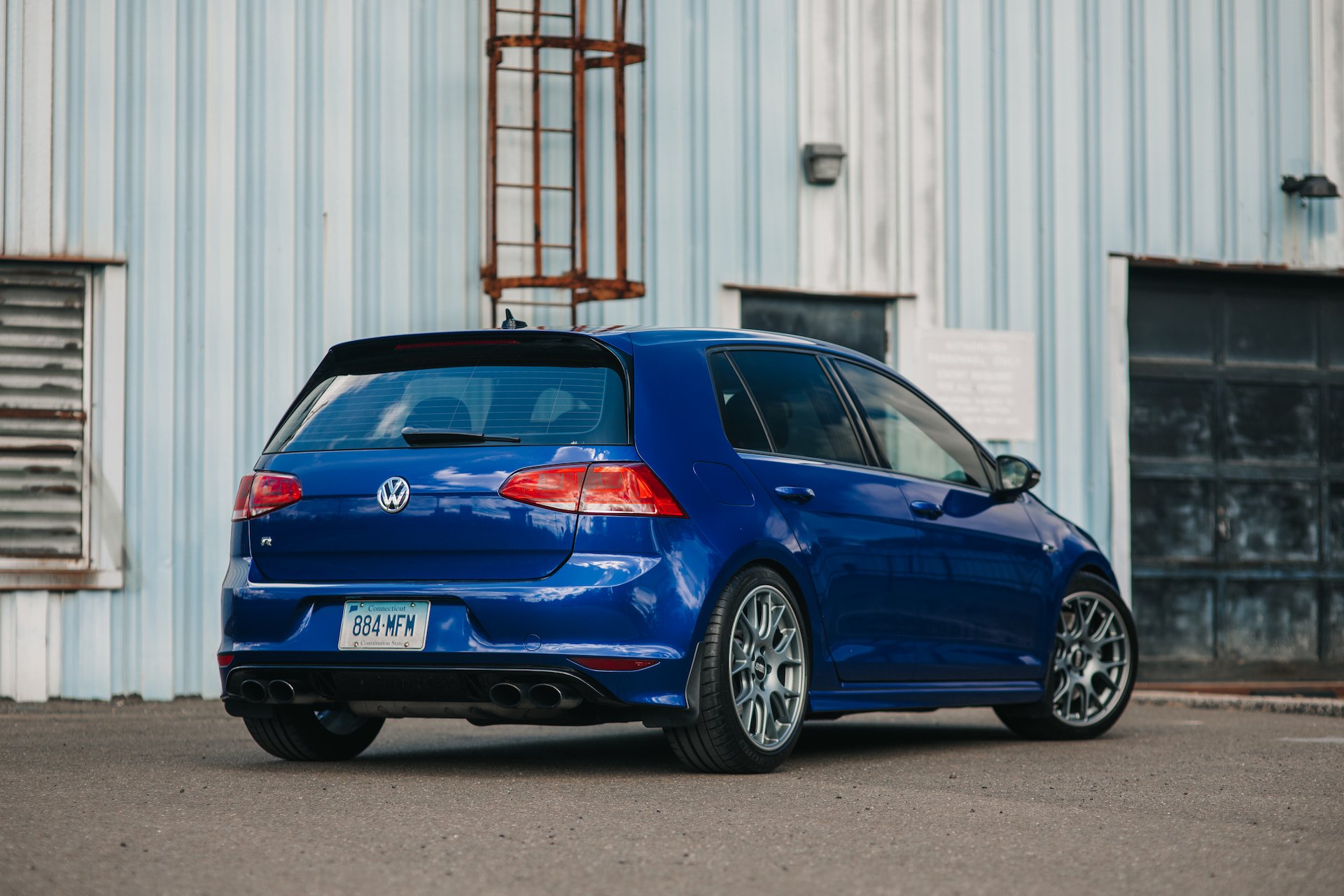
Outside, the Mk7 Golf R features a unique body kit. The front bumper utilizes more aggressive air inlets to provide extra cooling to the oil cooler and DSG cooler if equipped. Above the bumper sits R-specific headlights with a Bi-Xenon main beam and U-shaped LED daytime running lights. At the bottom of the bumper is a small lip that carries a body line down along the body color skirts and to the rear bumper. That rear bumper also houses a small diffuser-like area surrounding the R’s dual-twin exhaust outlets. Standard halogen taillights round out the rear of the car.
Mk7.5
Beginning in 2018, Volkswagen put the Golf R through a mid-cycle update that included several external cosmetic changes and a handful of technology updates for driver safety and entertainment. Because it’s different from the earlier cars, owners refer to the updated model as the Mk7.5.
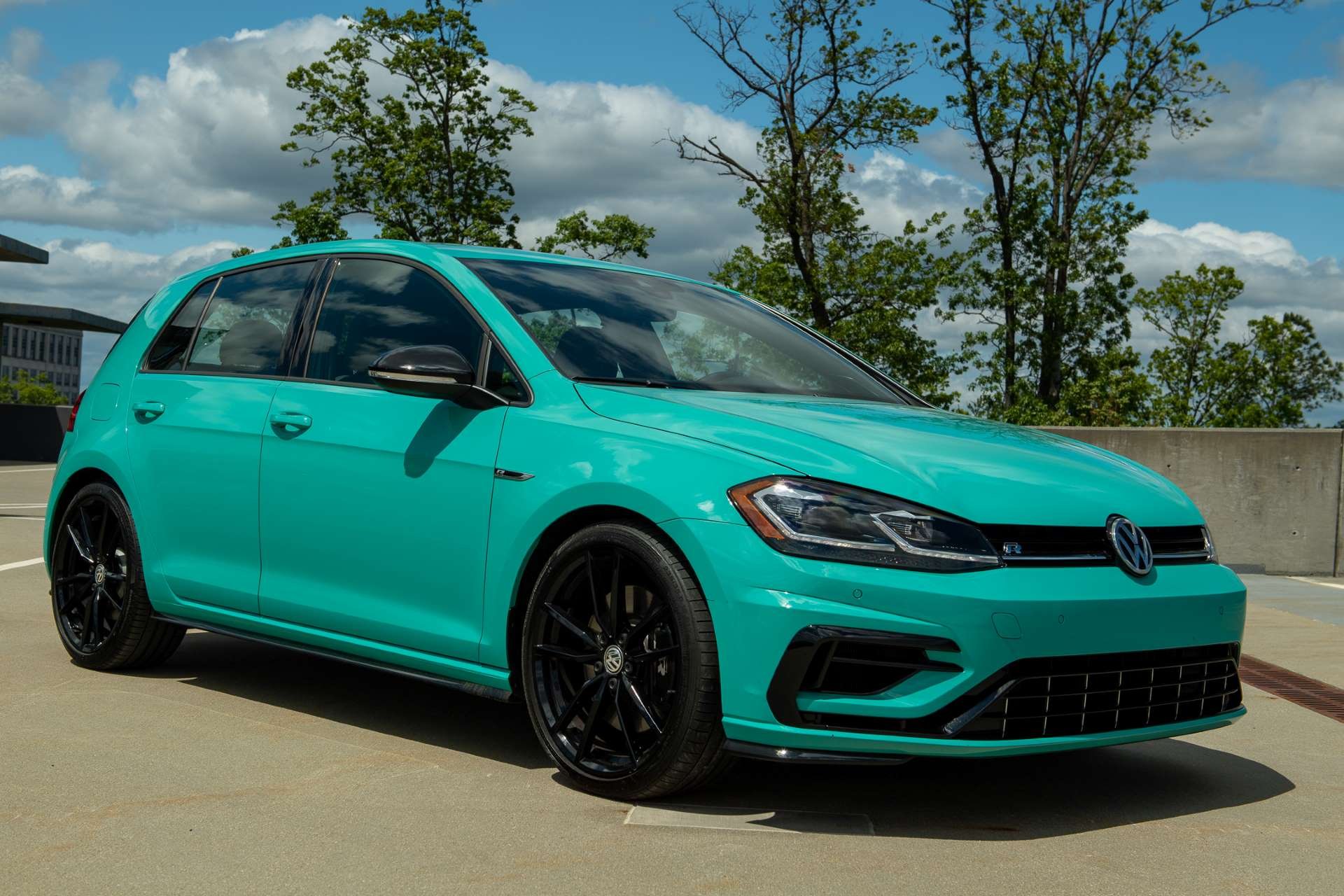
Starting with the exterior, full LED headlights and tail lights became the standard equipment. Below the lights were new bumpers. The front featured revised air inlets with more aggressive, straked openings. At the rear, the bumper was similar to the earlier piece but with slightly different lower edges to line up with the updated skirts and to accompany the body line. Between the bumpers and skirts sit a new wheel design, standard at 19”. Inside the cabin, the traditional mechanical gauges made way for a digital cluster with plenty of customization, and the infotainment system is slightly updated, too, growing from a 6.5” display to an 8”.
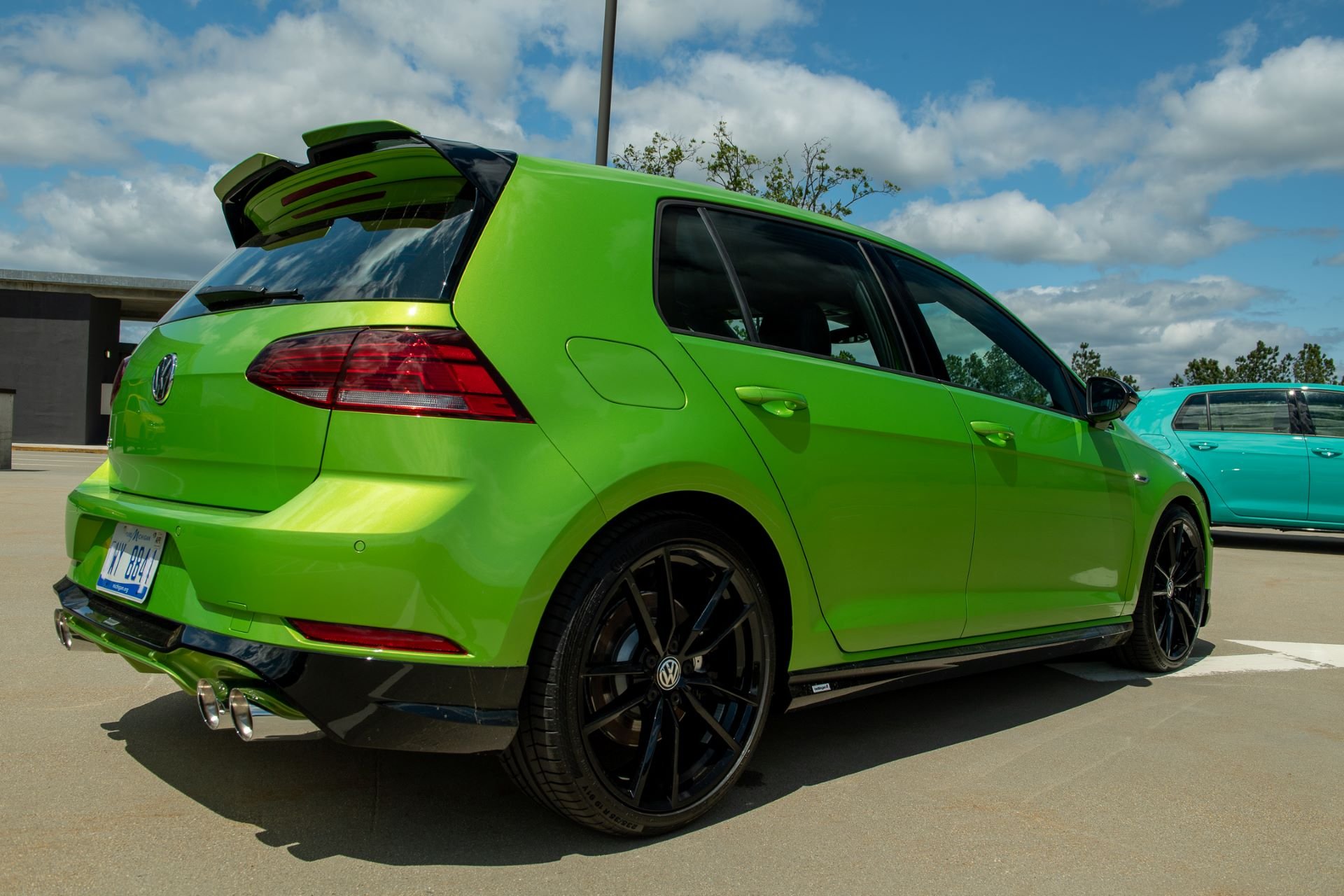
The only other tangible update was a new DSG transmission. The new unit added another gear and more strength behind the EA888. Acceleration times were marginally improved, but fuel mileage stayed the same. The last addition was a 6-year/72,000-mile, transferable bumper-to-bumper warranty.
Mk7 Volkswagen Golf R Spec Sheet
- Engine (CJXB/CJXC) :
- Engine Type: Turbocharged Inline 4
- Displacement: 2.0L (1984cc)
- Horsepower: 292 hp @ 5400 RPM
- Torque: 280 lb/ft @ 1800 RPM
- Compression Ratio: 9.3:1
- Max RPM: 7000
- Induction: Turbocharged
- Turbocharger: IHI IS38
- Boost Pressure: 17.4 PSI (1.2 Bar)
-
- Transmission:
- Manual: 6-speed, MQ350 (02Q), H-pattern
- Ratios: 3.36/2.09/1.48/1.09/1.10/0.91
- Final Drive: 4.24:1 (1st-4th), 3.27:1 (5th+6th)
- Mk7 DSG: 6-speed, DQ250, Dual-clutch Auto/Manual
- Ratios: 2.92/1.83/1.31/0.97/1.04/0.81
- Final Drive: 4.77:1 (1st-4th), 3.44:1 (5th+6th)
- Mk7.5 DSG: 7-speed, DQ381, Dual-clutch Auto/Manual
- Ratios: 3.19/2.75/1.90/1.04/0.79/0.86/0.66
- Final Drive: 4.47:1 (1st-4th), 3.30:1 (5th+6th)
- Transmission:
-
- Weight:
- Manual: 3300lbs / 1500kg
- DSG: 3373lbs / 1533kg
- Weight:
-
- Performance:
- Manual 0-60 MPH: 5.7 Seconds
- 6-speed DSG 0-60 MPH: 4.9 Seconds
- 7-speed DSG 0-60 MPH: 4.7 Seconds
- Top Speed: 155mph (Electronically Limited)
- Performance:
Mk7 Volkswagen Golf R Chassis & Drivetrain Breakdown
Engine
Under the hood of every Mk7-based Golf R is a third-generation EA888, a 2.0-liter, turbocharged, inline four-cylinder engine with the internal code CJXB or CJXC. While the EA888 had been around for some time, the Golf R’s mill is hardly like that first generation fitted in the end-of-cycle 2008.5-2009 Mk5 GTI. The main structure is a cast-iron block with 82.5mm cylinder bores and a closed deck. Material improvements allowed wall thickness to drop by about .5mm over the first two EA888 iterations, saving weight. Two balance shafts and a forged steel crankshaft with a 92.8mm stroke rotate inside the block. Drop-forged, fractured rods connect the forged pistons to the crankshaft. The pistons are exclusive to the Golf R and feature a 9.3:1 compression ratio, about .3 lower than the GTI. The drop in compression can be attributed to the higher boost pressures run by the über Golf.
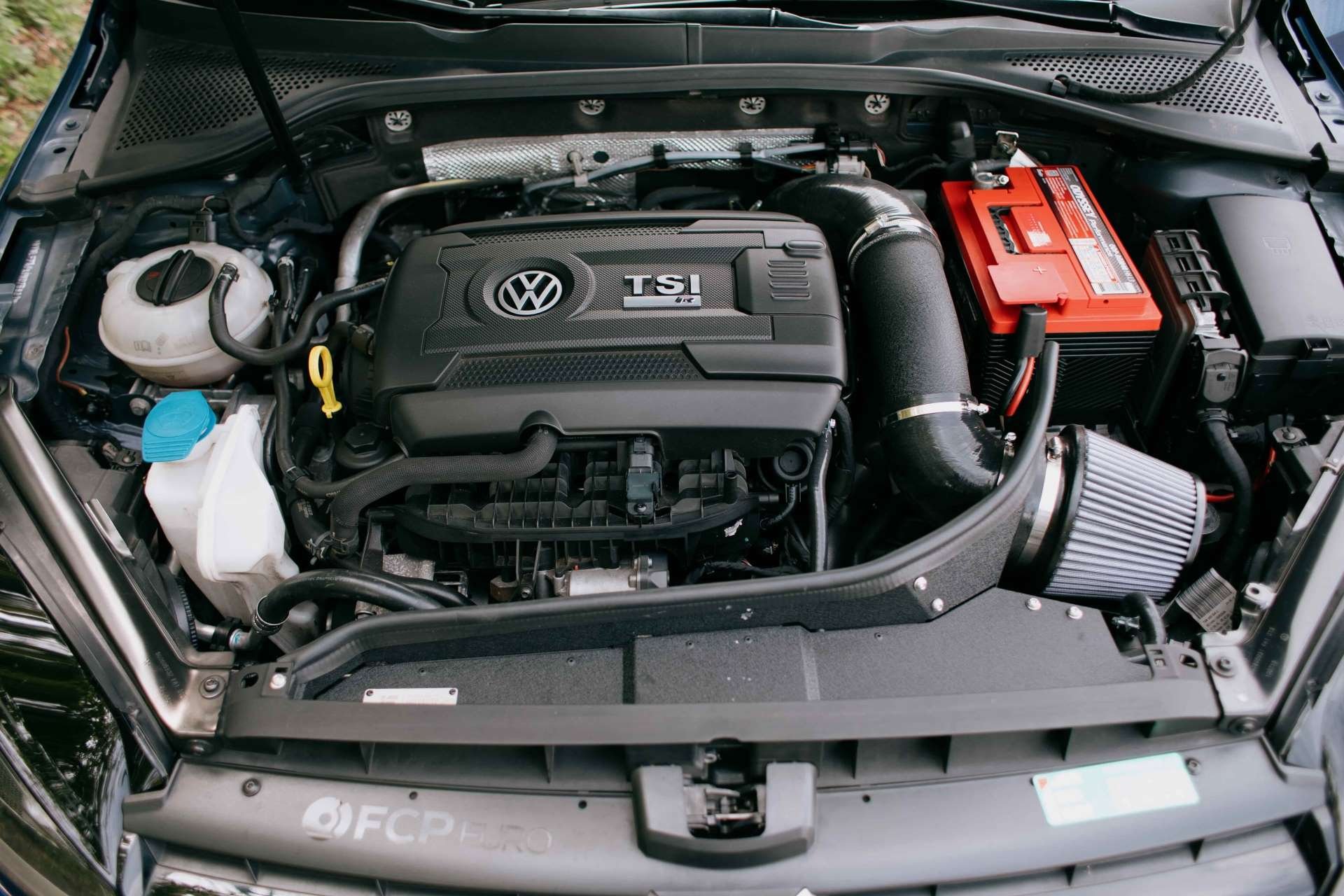
Sitting atop the bottom end is a new aluminum alloy cylinder head. As before, it features two camshafts with variable valve timing and four valves per cylinder, although the exhaust valves have variable lift. Camshafts are kept in time by an updated chain, new for Gen 3. Also new for the Gen 3 was an integrated exhaust manifold. A single exhaust port exits the head, as each exhaust runner meets at a single outlet. Combining the individual ports saved space and weight while allowing the engine coolant to cool the exhaust gasses and allowing the exhaust gasses to heat the engine coolant quicker. That might sound odd, but it’s a great piece of engineering. Exhaust temperatures on turbocharged engines can reach incredible levels and cause issues with exhaust valves and other components as they become too hot. The solution has always been to dump in more fuel as the excess vapor would pull heat out of the exhaust gasses. Switching to an integrated, water-cooled exhaust manifold keeps the exhaust temps reasonable without using extra fuel. On the opposite of that, engines use extra fuel while getting the coolant up to temperature. With coolant flowing around the exhaust outlet, its heat shortens the length it takes to get the engine up to temperature, reducing fuel consumption.
Yet even with the water-cooled exhaust manifold, VW strengthened the entire top end for better thermal resistance. The cylinder head features a new alloy composition with better thermal properties. Exhaust valves are sodium-filled, nitride coated, and use an alloy with a higher nickel content for improved heat management; even the exhaust valve seats were revised for better durability under thermal stress. Elsewhere, the EA888 is similarly bolstered for protection against heat. Oil squirters sit in the block and shoot cooling jets of oil at the backs of the pistons, and one or two auxiliary radiators are included to support the main piece, depending on the market.
The intense heat generated by the EA888/3 can be attributed to its aspiration, the turbocharger. The Mk7 was a change for Volkswagen as the typical KKK turbochargers, owned by Borg-Warner, were replaced by IHI chargers. The stock IS38 turbocharger is a twin-scroll design, using a divided exhaust housing that bolts directly to the manifold. An integrated electronic wastegate takes care of boost pressure, peaking at 1.2 Bar, or 17.4 PSI. The direct fuel injection system is the other half of the air/fuel equation. It isn’t radically new, although it has a higher fuel pressure for increased fuel flow. European models benefit from direct injection and a set of intake port-mounted injectors. American owners can acquire a port injection kit for their Golf Rs as the injector bosses are cast into the manifold.
While the port injectors aren’t necessary, they would cut down on the carbon buildup behind the intake valves, a genuine issue for the EA888. Direct fuel injection is excellent for fuel economy and power, but removing the injectors from the ports doesn’t allow gasoline to flow over the back of the intake valves. Carbon particles then find their way into the intake tract while the engine runs and cement onto the back of the intake valve or along the port walls. It’s an issue affecting almost every engine equipped with direct fuel injection, and there is only one solution. Without adding another set of injectors, owners must remove the intake manifold and use specialized tools to shoot walnut shell particles at the back of the valves to remove the buildup. A typical cleaning interval is around 90,000 miles with regular highway drives and trips to the rev limiter. More softly-driven care will need their valves cleaned sooner.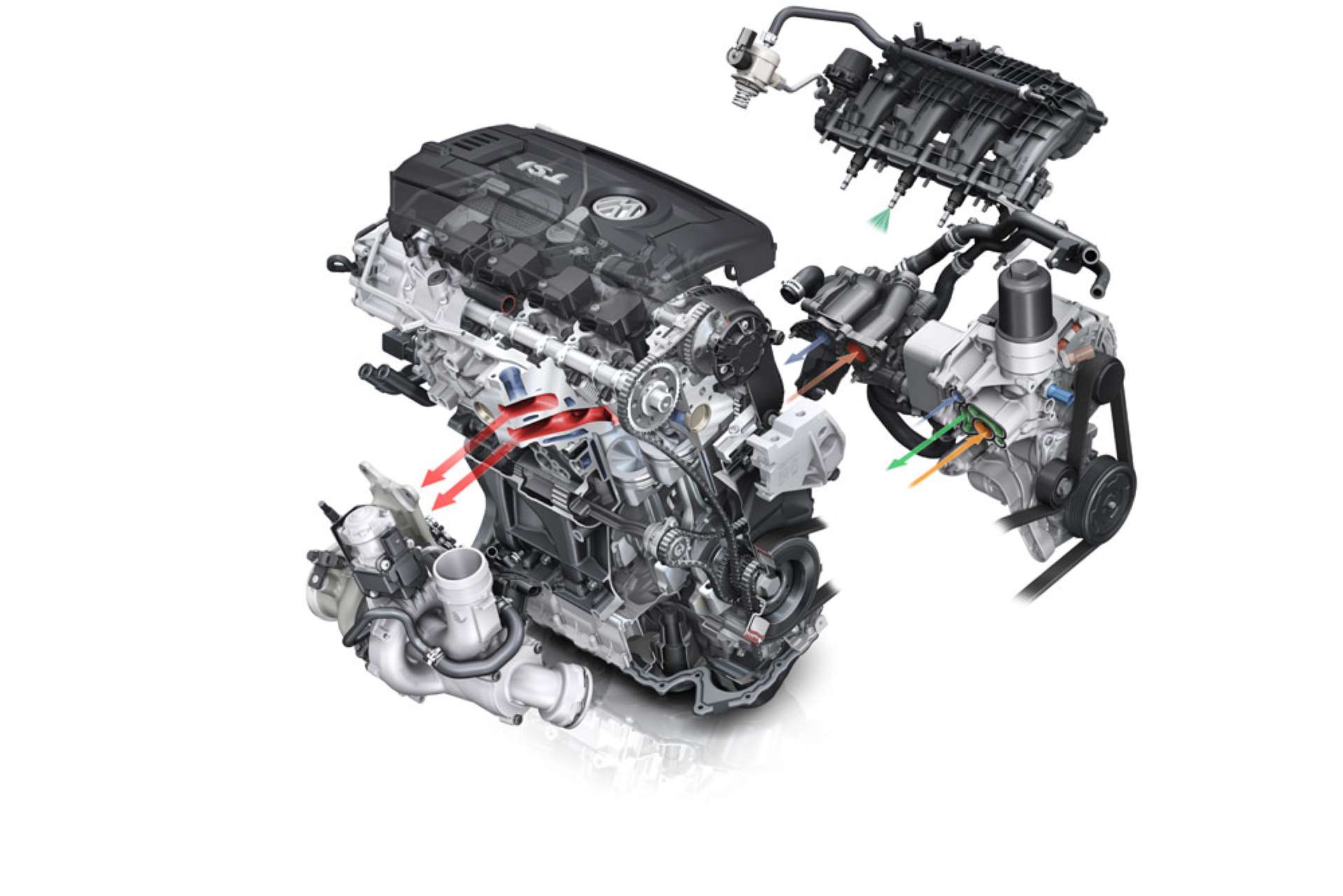
Another cause of the carbon buildup is the presence of oil in the intake manifold. It’s a common trait of turbocharged engines that can cause issues. The PCV system is there to significantly reduce the amount of oil present in the intake, and the one engineered for the Gen 3 EA888 is likely the best VW has made. However, it still isn’t perfect and remains a source of potential trouble. Inside the valve is a diaphragm that can rip, eliminating the PCV’s effectiveness. When that happens, excess crankcase pressure will build among the increased oil in the intake tract and begin to force oil out of the engine seals. The common leak spots are at the rear main seal, camshaft bridge seals, and timing covers.
Another area to be aware of is the cooling system. The water pump is made almost entirely of plastic, saving weight and manufacturing costs. However, it’s that construction that acts against it. Constant heat cycling makes the plastic brittle enough to crack and leak, leading to the most common engine issue on the EA888/3. On top of that, oil leaks above the pump will cause the sealing o-rings to swell and fail if they haven’t already dried up from constant heat exposure. You need to remove the intake manifold to get to the water pump, which is also a concern on the EA888. The carbon buildup that affects the valves will jam the flaps inside the intake and can be a factor in the flap’s linkage breaking.
Transmissions
The Mk7/7.5 Golf R had three transmissions: a manual and two DSGs. The manual is about the same six-speed unit as the original R32 had two decades ago. Although it has seen revisions, its reliability, simplicity, and driver engagement remain strong. The DSGs, while not as beloved by the average enthusiast, are phenomenal at what they do. They were literally the first brought to the public on the Audi TT, and the six-speed version on the earlier Mk7s carries the same DQ250 family code. The later Mk7.5 DSG, the seven-speed DQ381, is just as reliable and has a much higher torque limit than the older unit. We’ve covered the six-speed manual and DSG transmissions before, too, so you can find in-depth guides on the 0FB manual and DQ250 DSG through those links. However, I’ll give you a brief overview here.
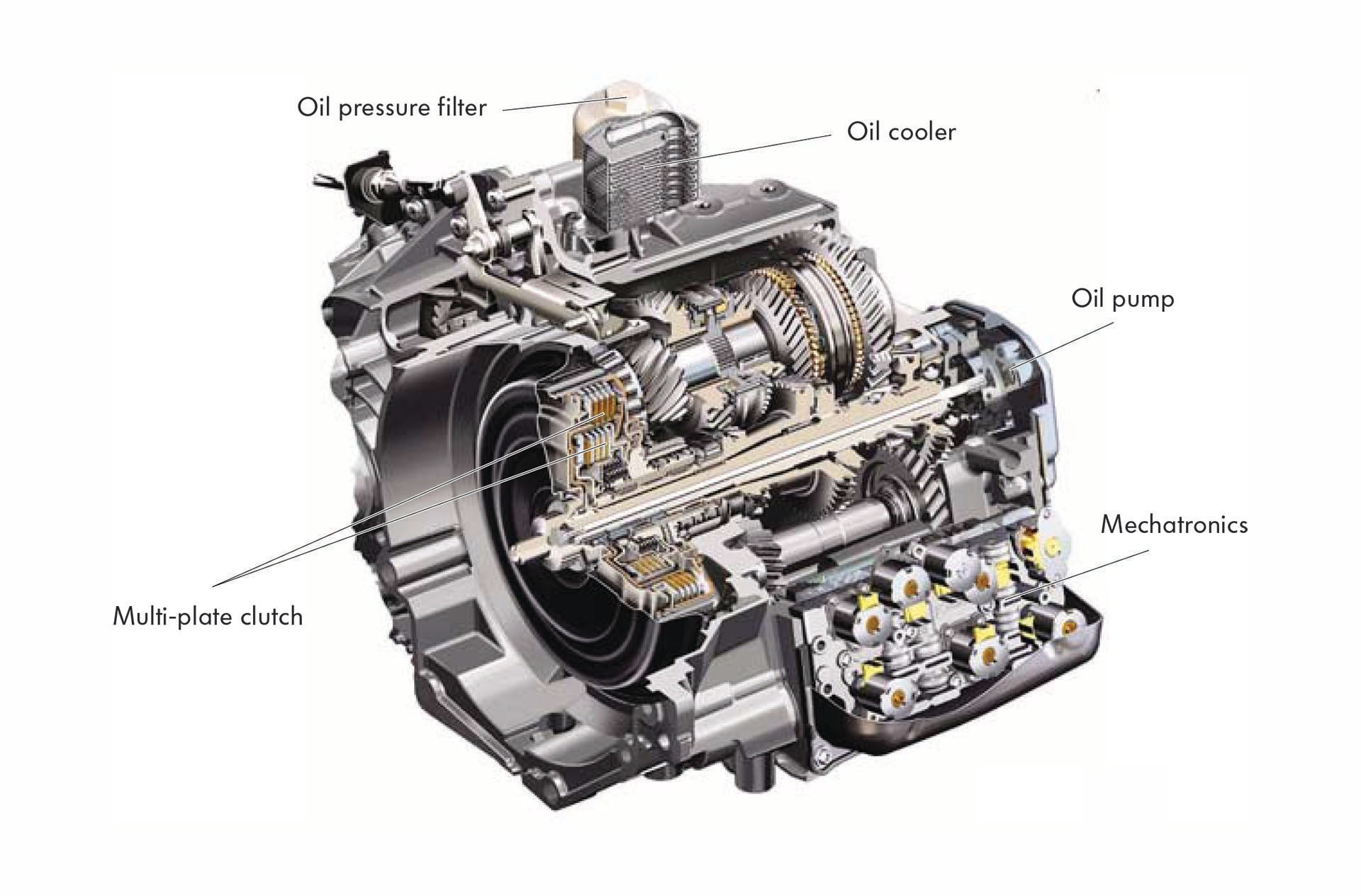
VW’s MQ350 family includes three variations of their 6-speed manual transmissions for transverse layouts, but only the 0FB is in the Golf R. It’s an updated and reinforced variant of the 02Q, and they share their hydraulically-assisted clutch and cable-shifted controls. The manual gearbox is stout at stock power levels, though they can get upset when you turn up the boost. There aren’t too many issues, and those that arise are typically from user error. Synchros and input shaft bearings are things to look out for on cars pushing more power than stock. Early transmissions could’ve had soft, brass shift forks, but they only bent under miss-shifts. If you want to raise engine performance, an upgraded clutch package is a necessity. Luckily, we know just where to get one.
Like the MQ350, the DQ250 DSG gearbox is another regular in the VW lineup. Its two decades of service have been commendable as it ushered in a new era of performance. The dual-clutch design eliminates the need for a clutch pedal as all clutch actuation happens electronically, letting the DSG serve as the “automatic” transmission option. Of course, drivers can switch it into manual mode and use the steering wheel-mounted paddles to change gear. It even comes with a “launch control” function that gives drivers the best possible acceleration from a dig. While that surely makes for a good time, too many launches can cause excessive wear on the DSG’s clutch plates, especially on modified cars. The DQ381 is the new kid on the block, but its development for Audi products has given it much-improved durability. Whereas its predecessor is near its limit in stock form, the new ‘box has plenty of room for modification. It’s the best choice for the sleeper Golf R, bar none.
In terms of reliability, the DSG is nearly bulletproof. Flywheel issues exist on transmissions fitted to TDI models, but that shouldn’t affect your Golf R ownership. If flywheel issues do occur, they’ll happen well over 100k miles and still be uncommon at that. The most frequent complaint among DSG owners comes from hard or rough shifting. The cause could be several factors, from worn fluid to a cranky mechatronic unit, worn mounts and bushings, or aggressively erratic driving. That mechatronic unit can be a more significant issue, though. The “mechatronic” unit is the internal set of electronics and solenoids that operates gear changes and clutch control. A few things are known to cause faults, but the only fix is a unit replacement. Thankfully, those rarely happen and shouldn’t be something to worry about. With that said, servicing is crucial. Fluid changes are needed every 30-40,000 miles with quality fluid and a fresh filter.
Haldex All-Wheel-Drive
The defining characteristic of the Golf R is the “4Motion” all-wheel-drive system providing all four wheels with engine torque. Haldex’s design is perfectly suited to the transverse front-wheel-drive layout and has seen success in other manufacturers’ products alongside Volkswagen. The German marque has used the Haldex system since the turn of the millennium after retiring their “Syncro” AWD, and the Golf R is the pinnacle of its use in the VW lineup. 0-60 times vary between testers and cars as tire, road, engine, and weather conditions play a role in the race against the clock. However, most results have the Mk7 and Mk7.5 sitting well under the 5-second mark. Sure, the R’s engine power plays a role, but it wouldn’t be able to launch off the line without a hint of wheelspin if it weren’t for 4Motion.
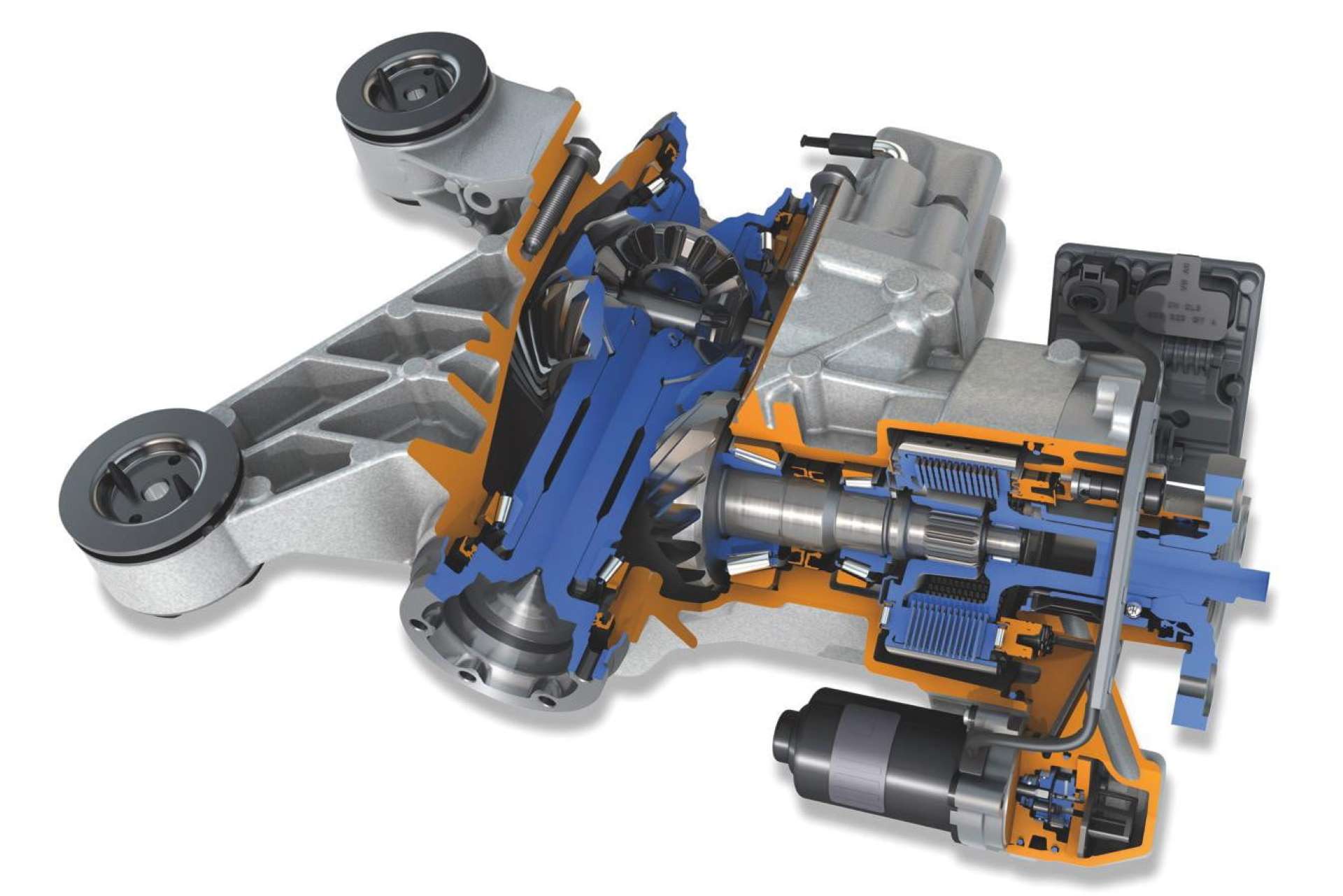
Traditional AWD systems, like Audi’s quattro or Porsche’s PTM, use three differentials: the front and rear drive the wheels, while the center differential splits engine torque between them. Those systems will have constant traction at all wheels in the range of a 50/50 to 30/70 front-to-rear torque split. VW’s 4Motion has no center differential, relying on the Haldex unit for power to the rear. Mounted on the transmission is a set of gears known as the bevel gear, bevel box, or angle gear. Those gears are connected to the output shaft and transfer the engine’s torque through a drive shaft to the rear wheels. Connected to the drive shaft just ahead of the rear differential is the Haldex unit, or AOC (Active On-demand Coupling). Under normal driving conditions, less than five percent of engine torque reaches the rear wheels, leaving your Golf R in FWD. However, once the various sensors determine slip is happening or have determined that torque at the rear will be beneficial, the AWD-controlling computer springs the AOC into action.
A centrifugal pump has the hydraulic fluid within the Haldex unit constantly pressurized. Once the computer wants a 50/50 torque split, the pressurized fluid engages the clutch pack within the AOC, locking the rear differential to the drive shaft and transferring the torque through it. All of that happens in less than a second for near-instant traction when necessary. The Haldex unit will relax its clutches once AWD traction is no longer needed, improving the fuel mileage.
Although it isn’t full-time AWD, the Haldex design does its job well—at least, when it’s working, it does. The AOC requires precise servicing and can still act up in a multitude of ways, regardless. Perhaps the most common is a failed hydraulic pump caused by a clogged filter screen. Hard launches and increased engine torque put extra stress on the clutch discs, causing them to wear. Debris from a worn clutch disc travels through the fluid before reaching the filter, where it’s stopped. The clutches can produce so much junk that they’ll block the filter screens and restrict oil flow to the pump, killing it. Owners have reported sufficiently clogged filters just 10,000 miles after service, making the pumps the leading cause for concern. Part of the issue can certainly be attributed to Borg Warner, who replaced the previously-replaceable filter with a smaller fixed screen.
However, there’s also the issue of the pump failing first. If the pump starts to act out intermittently, the lack of clutch pressure will cause the discs to wear, clog the filter, and kill the pump. At that point, the new pump, with its good pressure, will have bad discs to work with, causing a lack of AWD. Volkswagen knew about the issue and updated the AOC throughout production. The main culprit of these failures is the earlier differentials carrying the revision D through F, though even later revisions aren’t truly bulletproof.
The Haldex units can be tricky to diagnose as trouble codes they may have might not alert you, the driver. Unless they’re a major fault, the codes will store themselves within the car only to be discovered with the right diagnostic software. The easiest way to check if you suspect something is the matter is to check physically. Get yourself on a wet or loose road surface and get the car to try and spin its wheels. The Haldex will snap into action if healthy; otherwise, the rears will roll slowly as the fronts struggle for grip.
Replacing the pump is hopefully all you’ll have to do in the event of a potential issue, although that may be wishful thinking. Replacement pumps are relatively inexpensive, considering the technology in question. Replacement differential units are a whole other ballgame, requiring much more labor to replace and around 10x the cost of a replacement pump.
Suspension
The MQB chassis updates improved chassis rigidity and allowed VW to develop further their suspension design into what we see in the Golf R. In the past, the R had been characterized by fun but understeer-driven handling characteristics that not even AWD could change. However, Volkswagen was able to completely change that trend with the Mk7, dialing out the understeer with advanced suspension tuning, better AWD, and some help from modern technology.
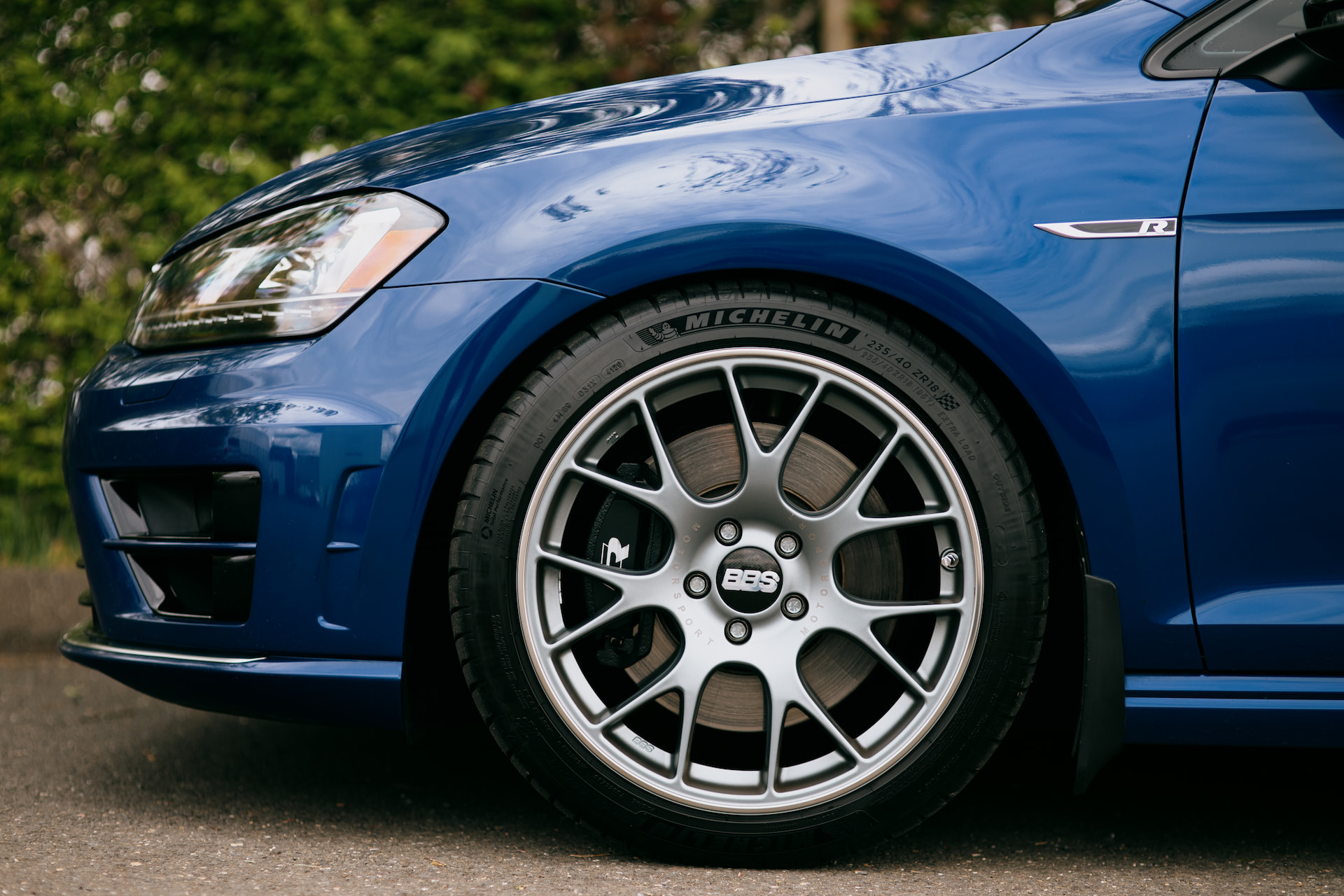
Upfront is the same MacPherson strut design used in the base Jetta and Golf, although the R’s components are much more performance-focused. A bespoke lower control arm controls the location and articulation of the wheel, while a Sachs damper controls suspension compliance. Supporting the damper is a stiffer and 0.2in shorter spring than the GTI. Bushings in the control arms are the same as most other MQB-based performance models like the GTI, S3, and TTS. Strut mount bushings are your typical solid rubber type and feature no adjustment.
The rear setup consists of four arms per side: a trailing arm, a lower control arm, a toe arm, and an upper control arm. The lower arm is the largest physical piece, acting as the spring’s lower perch. Every arm uses rubber bushings to dampen road vibrations and harshness, though the toe-arm bushings are explicitly revised for the R to reduce deflection. A single Sachs shock controls the damping at the rear with a similar spring arrangement to the front.
Volkswagen’s Dynamic Chassis Control was an option on the Mk7s and standard on the Mk7.5. As it’s known, DCC is an adaptive suspension package that utilizes accelerometers and various other sensors to intuitively change the damping characteristics of the suspension on the fly. On top of that, it also adds three damper settings for drivers to choose from; “Comfort,” “Normal,” and “Sport.” The DCC will work with the Golf R’s standard Drive Mode Selection, which sets different parameters for engine response and transmission shift points.
The largest problem owners seem to find with the suspension is the lack of camber adjustment. Stock components max out the front camber shy of 2° negative. Aftermarket control arms from SuperPro or those taken from a cousin, the 8S Audi TT-RS, both work for improved adjustment. The former option is inexpensive and requires no other modification for installation. The bushings are SuperPro’s polyurethane types though owners report a minimum increase of NVH. The TT-S and TT-RS components also work but require more from the Audi to work without flaw in the Golf R. The best course of action would be to grab the control arm and knuckle from the Audi and transplant them into the golf. It’ll involve a bit more money and work, but the aluminum Audi suspension pieces will shave around 7lbs per corner and increase the track width for improved mechanical grip and stability.
Adjustable aftermarket arms for the rear suspension are your only option for adjustable or improved geometry. Options from 034 Motorsports, Black Forest Industries, and Godspeed all feature aluminum construction and Heim joints instead of rubber bushings. Other components, like solid trailing arm bushings, are a common addition for tracked vehicles.
Brakes
Slowing down is as, if not more important, than speeding up. As the most powerful production Golfe ever made, the Mk7 R needed the brakes to back up the boost, so VW installed the largest brakes ever fitted to a Golf. They’re the same brakes used on the Mk7 GTI Performance Pack, sharing rotor dimensions and brake pads. Independent testers logged the Mk7.5’s impressive stopping performance at 102 ft from 60mpn; that’s the same distance as the Audi TT-RS of the same era.
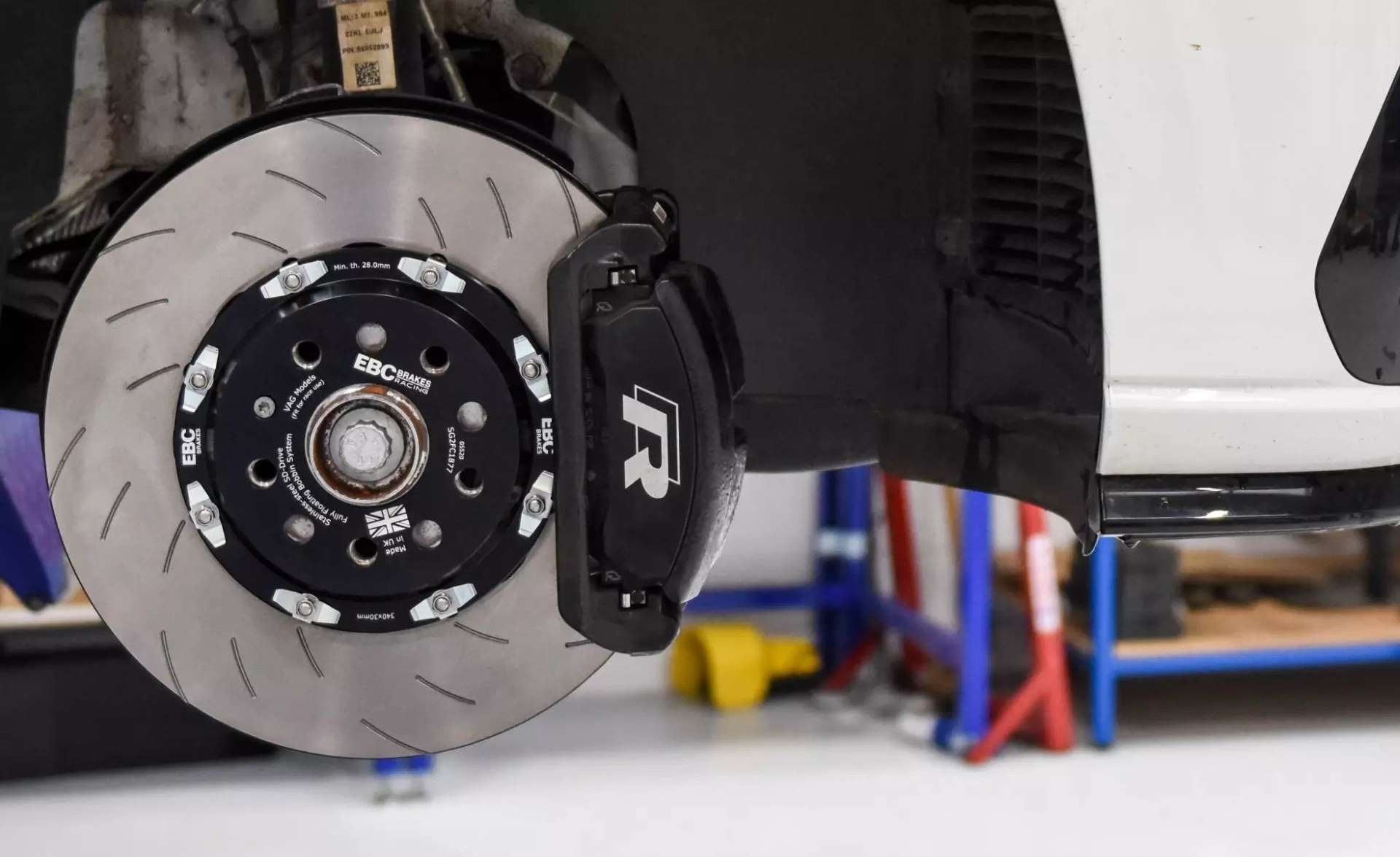
Mounted to the front hubs are a pair of steel, one-piece rotors measuring 340mm in diameter and 30mm in width. Clamping down over them are a pair of black-painted, single-piston sliding calipers, each with a silver “R” logo. At the rear, it’s more of the same story. Black, one-piston sliding calipers grab steel, one-piece, 310x22mm rotors. Unlike the GTIs, the R’s e-brake is electronically-actuated and housed inside the rear caliper.
Beyond the specs, there likely isn’t much else you need to know. None of the components are known to fail, and the car isn’t under-braked. Taking your Golf R to the track is a different story, as the original brake pads won’t love repeated abuse, but that’s all changed with a new pad. You can also fit the front rotors from the GTI Clubsport, a model we didn’t receive in the US. The rotors are the same size but use a drilled face for gas dispersion and two-piece construction. The aluminum rotor hat sheds significant weight and aids thermal diffusion, but the steel rotor ring remains steel like the OE R rotors.
What To Look For When Buying A Mk7/7.5 Volkswagen Golf R
After seven generations, it's no wonder why the Mk7 Golf is as good as it is. Practice makes perfect, and VW has had quite a bit. To its credit, the Mk7 is about as perfect as a Golf gets. The chassis is sublime, the infotainment and technology were class-leading by the end of production, the engines were powerful and reliable, the interior quality was near Audi levels, and the exterior was aggressive in an understated and clean manner. There are very few gripes to be had with the generation, especially the R, but they still exist. Whether you're off to the dealership or browsing your favorite website searching for a Mk7/7.5 Golf R, check out these areas.

The most expensive issue you'll run into comes from a potential Haldex failure or fix. The rear ends are several thousand dollars to replace when abused or neglected, so do your best to test it during a drive. The easiest way to do so without launching the car on pavement is to find a loose surface and "launch" it to observe the wheel spin. Improperly functioning Haldex systems won't always throw a trouble code, but a physical test will always tell the truth. Beyond that, ensure that the Haldex unit has been serviced properly. In this case, the 40,000-mile service interval must be strictly adhered to, and anything longer than that could lead to future troubles.
The other mechanical bits to look out for reside in the engine bay. The EA888 Gen.3 is one of the best engines VW has ever produced thanks to its substantial power potential and generally fantastic reliability. However, pay attention to the inside of the hood and surrounding components. Leaking coolant from a failing water pump will have hit the accessory belt and been flung around the engine bay. Any signs of odd residue, especially with a sweet smell, will likely mean coolant. It's possible the residue wasn't appropriately cleaned following a pump replacement, so be sure to question the pump and its last replacement to the seller. You'll also want to get under the car and check the rear of the engine. The EA888 has a few spots that develop oil leaks, but none are too critical other than the rear main seal. The OE seal design has proven to be a dud and has left many owners with the expensive bill of transmission removal just to replace a $40 part.
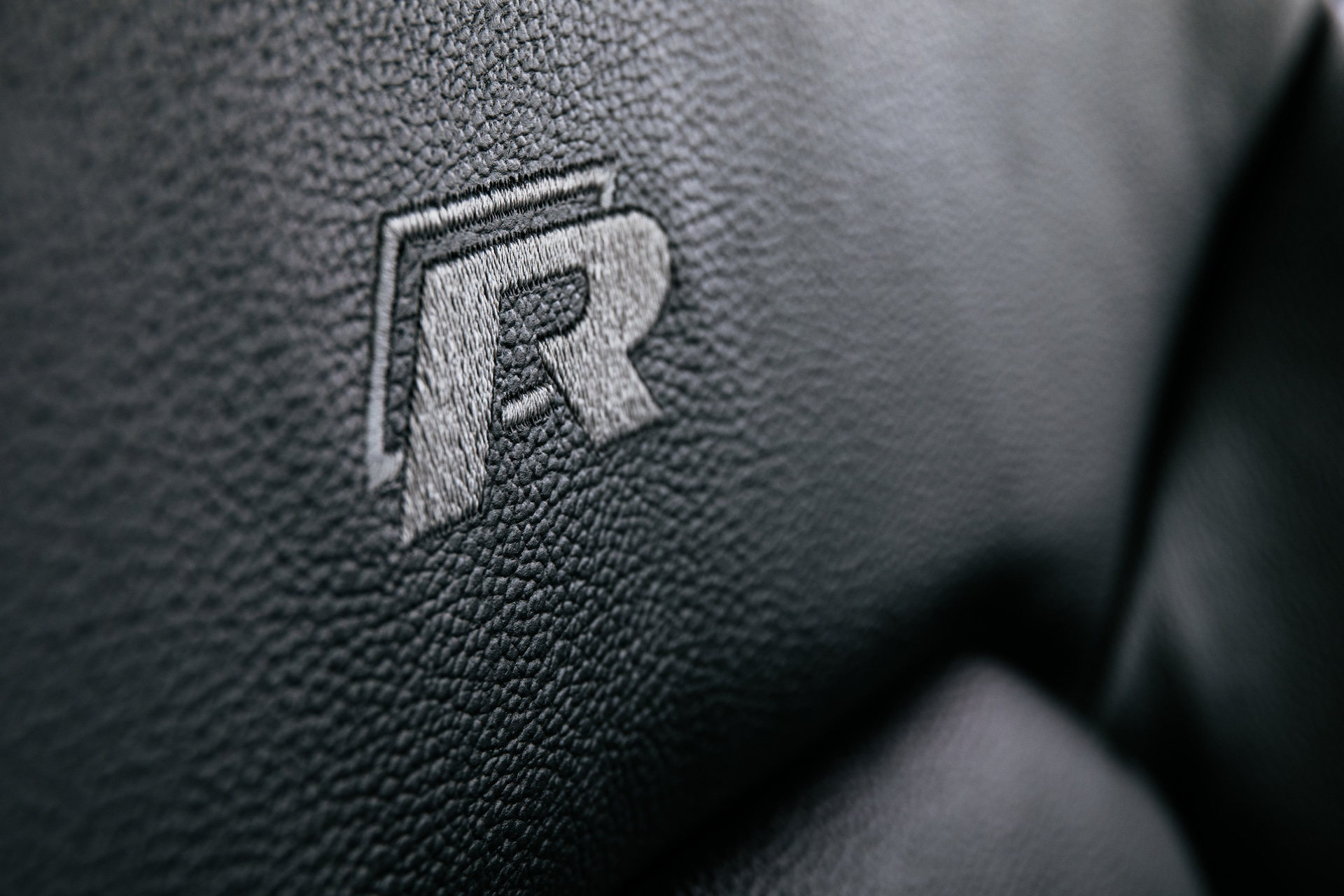
An oil leak can also mean a potential fault with the PCV system. Improper release of crankcase pressure can push oil out from behind seals, as well as send more oil through the intake. PCV issues were largely avoided compared to earlier engines, but they break occasionally. While they aren't too significant of a repair, the excess oil in the intake will lead to further carbon build-up behind the intake valves. As carbon builds on the backs of the valves, the intake ports effectively shrink, destroying power and fuel economy. The valves need cleaning around every 80,000 miles on a stock engine, so ensure cleaning has been performed before purchase—otherwise, use it as a bargaining chip to drive the price in your favor.
Inside the cabin, you'll want to carefully observe the leather seats and touchpoints. There shouldn't be any rips or tears on anything as the materials are pretty durable. Next, work through all the infotainment functions and observe response times. MIB1 systems are slower than the last of the MIB2s, so don't expect the most lightning-quick reflexes in the 2015 and 2016 models. If the example has a backup camera, cycle through it a few times to ensure it's communicating with the infotainment screen; some owners have reported less than communicative cameras in the past. Mk7.5 examples with digital instrument clusters will have a few more settings to cycle through for a complete check.
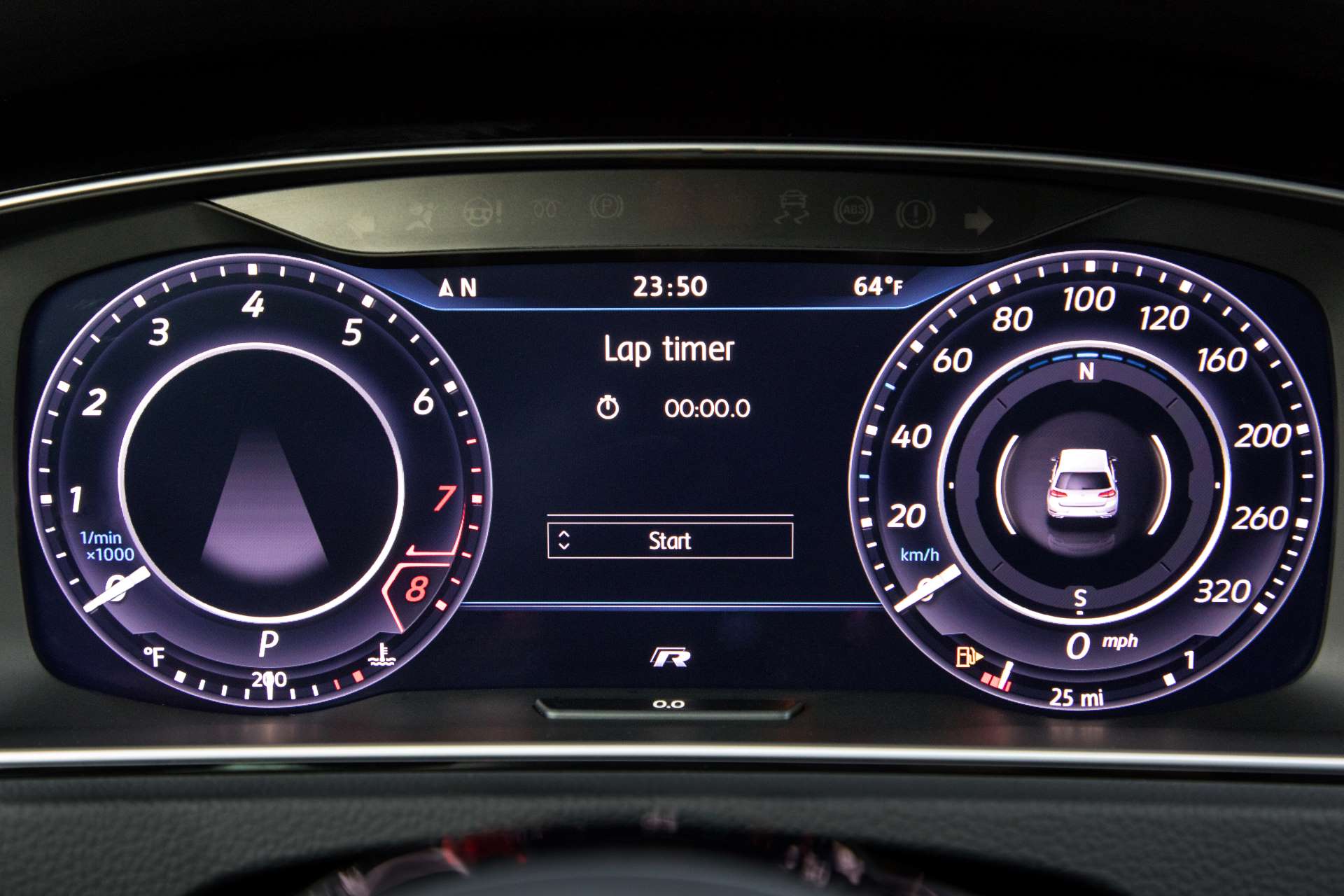
Lastly, check for any signs of undisclosed modification. The Golf R is a tuner car, after all, and most owners will have put their own touches on their cars. Performance mods are great ways to improve driving and ownership, but they put an extra strain on components that weren't designed for additional power. The Haldex, especially, is susceptible to increased failure rates with raised power levels. If fitted with a manual, give it a strong pull through the middle gears to test clutch strength. The biggest gripe with the row-your-own is that the OE clutch can't handle anything over stock power. A slipping clutch isn't a cheap fix and can signify prior modifications and abuse.
At the end of the day, find examples with the lowest mileage and most complete service history that you can. Both of those should lead to a well-kept example with the least potential headaches in the future.
Mk7/7.5 Volkswagen Golf R Valuation
The Mk7/7.5 Golf R has the distinction of being the most-produced Golf R generation. As such, there is an abundance of available Rs to choose from on the used market. Are they less special than the earlier cars? In terms of available examples, sure, but the Mk7 remains a far more useable and capable vehicle without losing its best features. Under the skin, it really is closely related to the Audi TT of the same era.
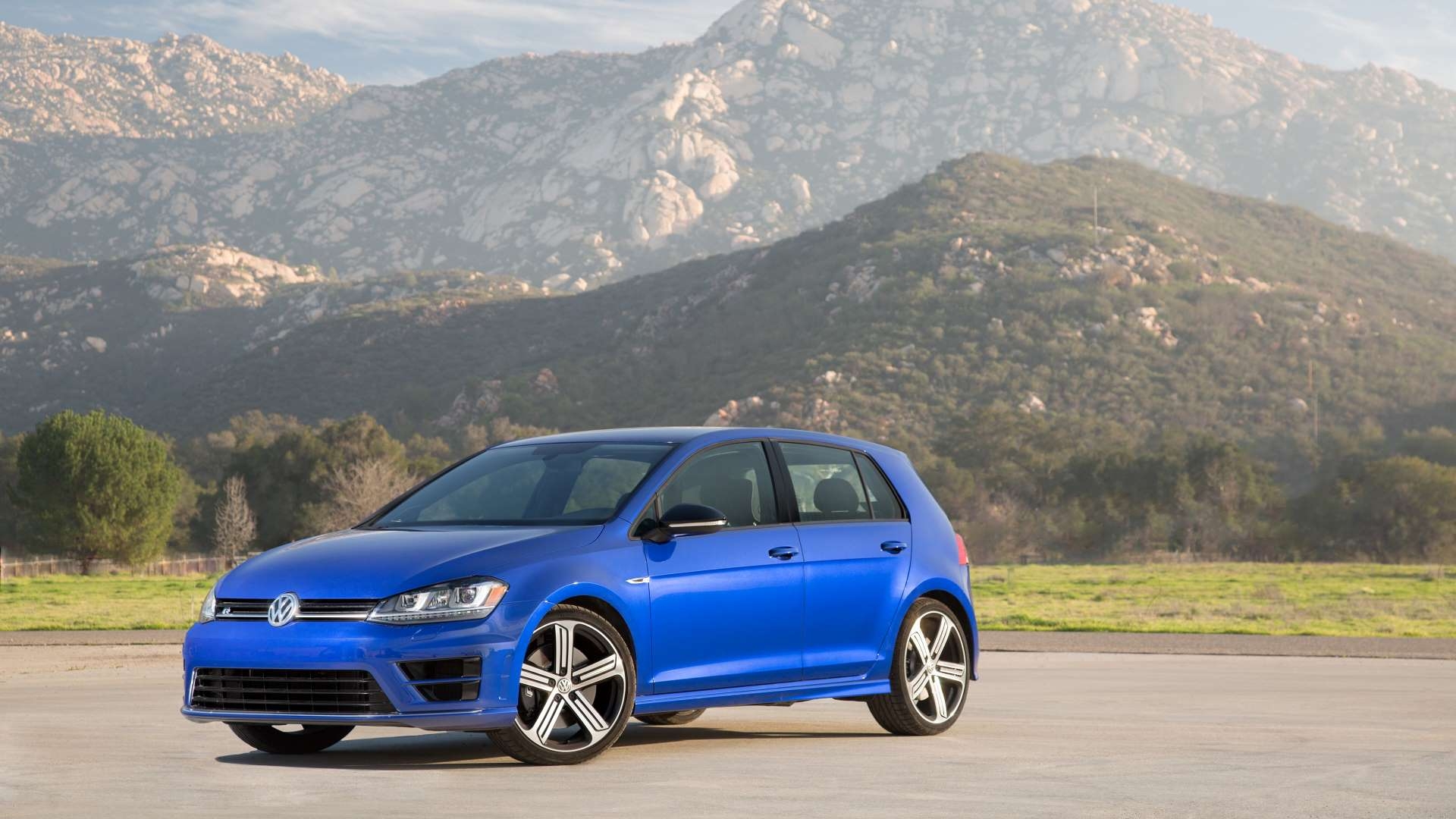
The early half of production, dubbed the Mk7, ran from 2015 to 2017. Compared to the later cars, they have analog gauges, different lights, bumpers, and wheels, and a much more analog infotainment system. Because of those distinctions, they’ll bring a lesser asking price than the later cars, dubbed Mk7.5, even with the same mileage. With under 50,000 miles, expect a Mk7 to be priced between $30-40,000. Nearly every single one you find today will sit in that range, no matter the color, transmission, or options. The Mk7.5 is close but a bit more expensive. Upper-end cars with lower miles and any color or transmission will top out a hair under the $50,000 mark. They can dip into the lower mid-30s, but those examples are relatively limited, with the average low side falling closer to $38,000.
Double the mileage, and prices fall moderately. Mk7 Rs, with just shy of six figures on the odometer, sit in the lower-middle $20,000 range. Set the mileage to just above the 50K mark, and prices jump up about ten grand. Facelifted Mk7.5s top out around that $38,000 mark and can dip as low as $30,000. Examples with more mileage exist, but they won’t get much cheaper than $20,000.
Is the Mk7/7.5 Volkswagen Golf R Reliable? Cost of Ownership? Are they easy to work on?
With all of the development the MQB chassis has in it, along with the third-generation engine, the Mk7 and Mk7.5 Golf Rs are some of the most reliable VW products you can buy. Only the GTI may have it beat for performance models, and that’s down to a lack of Haldex to worry about. You should have to spend little on significant repairs as an owner so long as the car remains relatively stock and services are handled correctly and on time.
Servicing and maintenance on the Mk7/7.5 can primarily be done at home. A capable scan tool is necessary for parking brake retraction and some other functions, but non-specialty hand tools are largely all that’s required. Routine jobs like the brakes, filter, and fluid changes are as straightforward as any non-performance Golf. More involved procedures like the water pump and PCV replacements are certainly DIY-friendly in a garage or driveway with a bit of patience. Service costs aren’t Honda cheap, but the R is still a Golf. Oil change kits should run around $70, Haldex services around $115, and air filter changes about $20. Pads and rotors for the front and rear will combine to about $400 on the low end.
It’s a similar story when it comes to modification. Intakes, intercooler piping, and turbo muffler deletes will be perfect DIYs for one looking to get familiar with their Golf R without risking major damage. Exhaust-side mods like cat-backs, downpipes, and turbo swaps will be much more involved, but the DIY process isn’t out of the question. However, do understand that improving performance will put more strain on components that might not be designed to handle the increase. The Haldex clutch packs are especially susceptible to excessive wear leading to a replacement. The six-speed DSG is superb with minor tunes but begins to falter at serious performance. Manual transmissions can handle the abuse but need a tougher clutch. Uprated clutches start just above $750 and can run over double that with a new flywheel.
With all services completed and a close eye on the trouble spots, the Mk7/7.5 R will last a long while. Expect over 200,000 miles from the EA888 when filled with good, Euro-spec oil. Haldex fluid replacements are also critical and best completed with Genuine fluid. Other items like discs, pads, and filters are much more suited to personal choice. Either way, you choose, service parts will be relatively inexpensive and necessary only at specified intervals.
Once you've absorbed all of that, you're ready for ownership! Jokes aside, the MQB-based Golf R is in relatively rare company. The AWD tuner car is fading as priorities change, yet the Golf R remains one of the few readily available and does so with more luxury than most rivals. It's driveline is reliable and powerful, with plenty of room to improve—what more could you want? If there's anything you'd like to see added to this guide, please let us know in the comments below. As always, subscribe to our YouTube channel and follow along on the DIY Blog for more daily content!


